It's hard to imagine multi-brand, multi-industry online stores without internal Search Engines.
In fact, it's even hard to imagine small stores "selling three products in total" without this functionality.
The reason for this is very simple. When choosing from thousands of products, customers are stuck with Search Engines. The absence of this tool suggests that the store is somehow defective.
A Search Engine is a standard, an obvious functionality.
And since it's so obvious and essential, the Search Engine has a challenging role to play in E-Commerce. People expect a lot from it.
How can it be optimized? What do you need to do to make the Search Engine in E-Commerce perform well?
We'll respond shortly.
What is the difference between browsing and searching?
The problem is not semantic, although both terms are synonyms to a certain extent.
People use online stores for two basic purposes:
- To buy products
- To learn about products, prices, and offers.
Searching defines the first of these goals, and the second refers to browsing. Both actions involve different expectations regarding the functionality and user experience of an online store. Let's take a look at their characteristics.

Searching:
- Stems from a need that is concrete, conscious, and demands to be satisfied
- Is much more task-oriented; it aims at achieving specific goals
- Requires minimal knowledge about the product (e.g., its name or belonging to a given category, e.g., gaming laptops)
- Is based on the activity of the store's customer, expressed in, for example, entering a keyword
- Involves, to a greater extent, narrowing the selection pool, search results
- Aims at avoiding coincidences, attractors
- Considers the time — shopping should be as short as possible
- Creates pressure to achieve objectives.
Browsing:
- Doesn't require activity from the user
- Is based on openness and curiosity
- Stems from a desire to gain knowledge, to be informed, to be inspired
- The objective and tasks aren't precisely defined
- Doesn't require knowledge of names or details
- To a large extent, it's provoked by the activity of the store in the form of recommendations, hints, social proofs, or opportunities
- Seeks to learn about the majority of possibilities
- Expects to indicate the extensiveness of the offer, to get acquainted with as many options as possible
- Doesn't consider time — browsing can last long
- Is sometimes a source of pleasure and relaxation; it doesn't create pressure but instead arouses needs.
Let's note from the beginning that both these approaches, modes aren't rigid.
Customers of online stores easily switch between browsing and searching.
Thus the design of the online store needs to include functionalities appropriate for each of these activities.

So, what should you offer users who are in the mood for browsing?
Functionalities that support browsing include the following:
- Clear distinction of categories and products
- Offering attractive, eye-catching photos
- Using catchy headlines
- Automatic suggestions
- Proposing search results based on search history
- Wishlists.
Whereas functionalities supporting searching include the following:
- Product comparison engines
- Filtering and sorting functions
- Easily accessible opinions and ratings
- Easily accessible specifications
- Recommendations of compatible, peripheral products
- Quick-shop buttons.
From the standpoint of conversion rate, sales volume, and user experience, the best results come from taking care of searching customers as much as browsing ones.
E-Commerce Search Engine, why is it worth optimizing it?
A Search Engine in a store is as essential as the wheels in a car.
This answer is pretty obvious and unambiguous. It's true. Let's go beyond it. The article by Huy Troung, "Insights of effective on-site search on an ecommerce website," will inspire you regarding solutions.
The author cites many statistics indicating the unique role of the Search Engine. The most interesting data concern the influence of optimization of the Search Engine on the level of sales.
Poorly designed Search Engine means:
- An increased Bounce Rate
- Lower Conversion Rate
- Bad UX (it's influenced by, among others, the logic behind the Search Engine, but also its location, size, and appearance).
Store users who will consider the Search Engine useless, "refusing to cooperate," and offering results that don't match the inquiry will rarely become the customers of such a store.
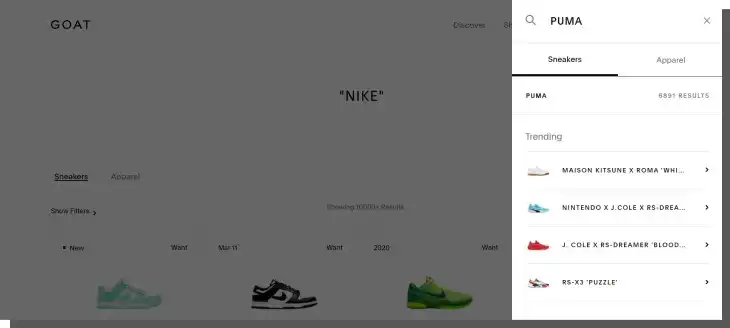
We'll write more about design, visual, and aesthetic aspects later. Let's start with how the Search Engine works because it has paramount significance from the usability perspective.
Determinants of searching in online stores
Raluca Budiu, in the article "Search Is Not Enough: Synergy Between Navigation and Search," points out a few significant problems regarding product searching in stores.
Namely:
- The search result is always a product of the form of the question and the logic of the functionality
- Keywords used by the Search Engine and the user don't always coincide. The level of their overlapping, tolerance for mistakes, and synonyms are also very important.
Furthermore:
- Searching strains the working memory and requires "to feel the logic of the tool"
- Entering keywords involves a risk of making a mistake which can result in false results (the results suggest that the product is not in the store; meanwhile, it is available)
- The cost of the interaction of searching is higher than browsing.
However, these aren't the only problems you'll encounter while designing and optimizing the Search Engine in an online store.
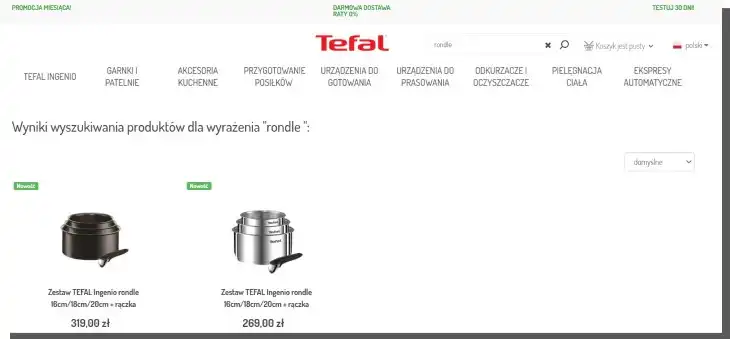
Researchers from Baymard Institute, in an extensive study dedicated to problems with Search Engines, diagnosed as many as 8 types of queries used by store customers.
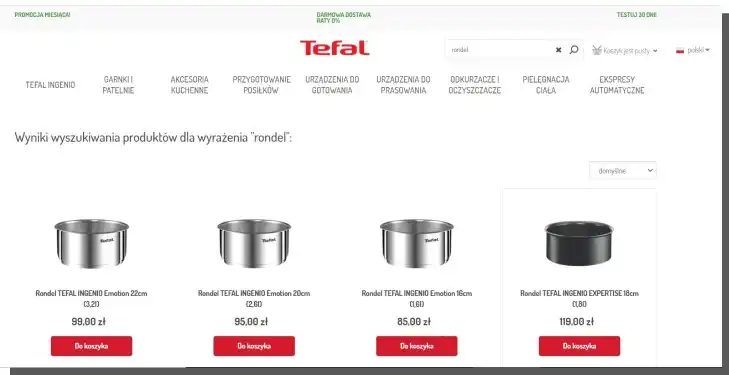
You can find a detailed discussion of them in the article "Deconstructing E-Commerce Search: The 8 Most Common Query Types."
Distinguished types of queries create 3 groups that allow customers of the store to determine expectations regarding results they expect.
When creating queries, customers of online stores determine the following:
- Query Spectrum (its scope)
- Query Qualifiers (its boundaries)
- Query Structure (its syntax and context).
The Spectrum allows them to determine the domain of the collection (e.g., laptops), Qualifiers indicate the size of the collection (e.g., gaming laptops), and Structure is aimed at making it easier for the Search Engine to "understand" the query.
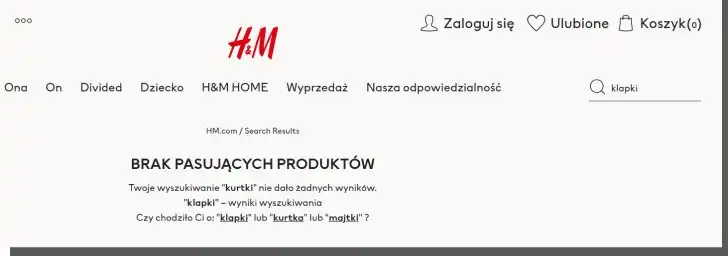
Users often use queries that will enable them to determine and indicate the following:
- Precise name and model of the product, e.g., Xiaomi Redmi Note 10 (Exact Search)
- Category, the type of the product, e.g., laptops (Product Type search)
- Linking the product category with the problem, e.g., pills for headaches (Symptom Search).
Sometimes they form queries that don't relate to the assortment but to the store's operation (Non-Product Search).
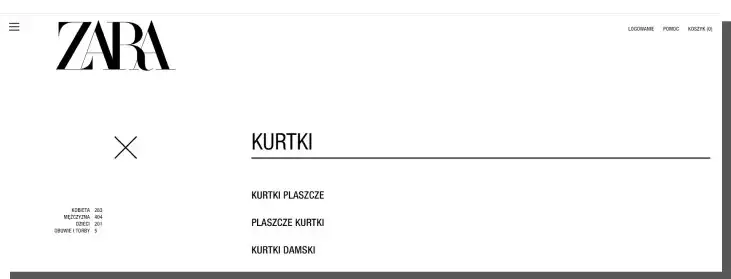
Determining the boundary of the scope is often done by indicating the following:
- The highest feature or function, e.g., gaming laptops (Feature Searches)
- Context, ways of using, role, e.g., curtains for living room (Thematic Searches)
- A link between the brand, manufacturer, and a function, role, and context, e.g., memory cards for HP laptops (Compatibility Searches)
- Relations, connections, e.g., Books by Oscar Wilde (Relational Search)
- Subjective, significant traits, e.g., the best laptops (Subjective Search).
The Search Engine should be able to handle all these variants.
The search results should, as best as possible, match the customer's intent and purpose.
As if that wasn't enough, the Search Engine should also suggest and tolerate mistakes, jargon, slang, and informal terms.

Finally, there is one more memento, or rather a remark by Kate Moran, who, in the article "The State of Ecommerce Search," warns not to equate a successful search with completing the task.
Designing a search box in E-Commerce
Let's start with another very crucial remark ;-) This time made in the article "Mental Models For Search Are Getting Firmer." It also concerns the expectations of online store customers.
According to the findings of the researchers from Nielsen Norman Group, the search boxes need to relate to the mental models of customers. And these, in terms of searches, were shaped by popular Search Engines (e.g., Google, Yahoo).
The appearance and components of Search Engines were conventionalized.
As a standard, it must include the following:
- Box to enter a keyword
- "Search" button
- Drop-down list with hints, suggestions, and autocompletion
- List with the most accurate search results for the query.
Although a shift from this convention can be observed (a magnifying glass icon replaces the box), it's still the most widespread, understandable, acceptable, desired, and liked form.

A search box is often:
- A "neighbor" of global navigation
- Placed on the top of the page, in the center, or on the right side of the site
- Highlighted visually by a combination of a rectangle and a button that's easy to see
- Long enough to fit keywords consisting of a few words and dozens of characters.
Moreover:
- It has a "Search" label (that doesn't have to be deleted!)
- It's constantly available, and it doesn't disappear during scrolling
- It offers to start a search by clicking on the Search button or pressing Enter on the keyboard.
Unfortunately, E-Commerce customers are demanding. And their list of expectations doesn't end here.

Search Engines should also offer the following:
- Option to receive personalized results based on previous searches
- Tolerance of typos
- An extensive system of recommendations
- Multi-search — the ability to search with text and images
- Search by criterion, e.g., brand
- Combination of searching and filtering (category-specific filters)
- Highlighting (e.g., in bold) the most accurate results
- Structuring of responses (suggestions, categories, advice, recommendations, ideas).
It's also worth emphasizing that the location of the search box should correspond to the established convention and be visible at a glance.
The color of the box plays a significant role here.
Easy recognition of the search box is most effectively achieved by the following:
- Highlighting the box frame with color and bolding
- Placing the box on a contrasting background.
An observable trend for some time has been to make the search box more discreet and transparent; however, from the perspective of its recognizability, it's a questionable practice.
The Search Engine in an online store is the greatest ally of the customer, and it should be easy to find.
The design of search suggestions
Some like them, and some ignore them. Personally, I have pretty good and very good experiences with suggestion systems. Autocompletion rarely bothers me.
It's pretty obvious in the user experience-oriented design that human working memory is limited. We can remember up to 7 pieces of information.
Moreover, the longevity of the working memory is also limited, just like its resistance to distractors (distracting stimuli). In the case of complex, sophisticated, specialized, and jargon keywords, this has a significant meaning.

But also, while entering an ordinary phrase (e.g., spring jackets), suggestions are helpful. For example, it helps you "remember" the cut, color, and brand you completely forgot about.
Suggestions also enable avoidance of mistakes appearing during the entering of keywords. By avoiding typos, users avoid stress and frustration and save time and energy. It considerably reduces the cost of interaction.
From the store's standpoint, this tool allows it to direct the user and make the shopping experience a combination of the customer's needs and the store's current needs. For instance, regarding the need to "clear warehouses."
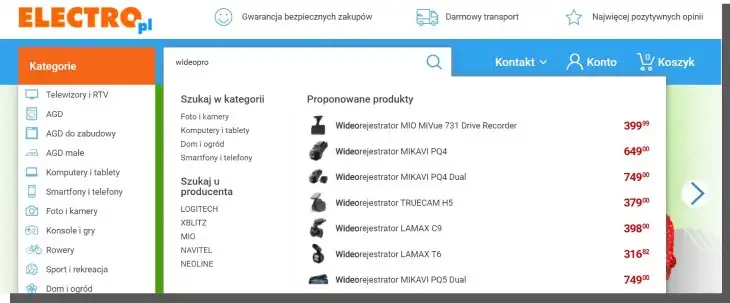
Kate Moran, cited above, in another article, "Site Search Suggestions," observes that, in general, there are two types of suggestions:
- Involving adding characters to already entered ones by the customer
- Indicating entire phrases.
In the case of the first ones, a best practice is to visually highlight characters entered by the users and those added by the Search Engine.
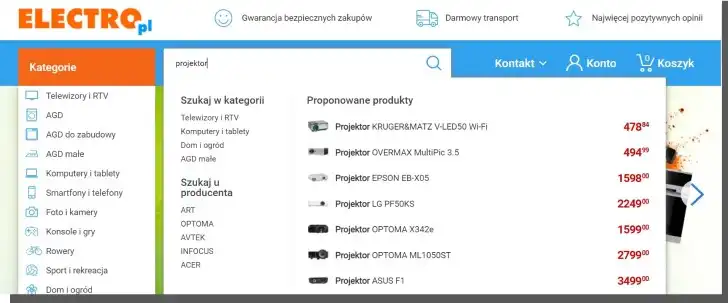
In the second variant, the phrases should be highlighted so that the customer gets clear, easy-to-understand information about which part is the result of their activity and which part is the result of the system.
Search Engine in an online store. Summary
- Search Engines in online stores are standard, without which it's challenging to buy and sell products effectively.
- Users use online stores to shop and browse products, prices, and offers.
- Searching and browsing involve different expectations regarding functionalities and user experience.
- Customers of online stores easily switch between browsing and searching.
- The cost of the interaction of searching is higher than browsing.
- The online store's design must consider appropriate functionalities for each of these activities.
- Taking care of searching and browsing customers supports conversion rate, sales, and user experience.
- A poorly designed Search Engine means a higher Bounce Rate, lower Conversion Rate, and bad UX.
- Users who will consider the Search Engine useless, offering results that don't match the inquiry, will be pretty unwilling to continue shopping.
- Search results are always a product of the form of the question and the logic of the Search Engine.
- Searching strains the working memory and requires "to feel the logic of the tool."
- When creating queries, users of online stores determine the Query Spectrum, Query Qualifiers, and Query Structure.
- Queries are formed to allow users to determine and indicate the name, category, and type of the product and link the product category to the problem.
- The Search Engine should also offer suggestions and tolerate mistakes, jargon, slang, and informal terms.
- The search box design needs to refer to the mental models of customers.
- The Search Engine needs to include a search box for entering keywords, a "Search" button, and a drop-down list with suggestions.
- The search box must be visible at a glance.
- We can remember up o 7 pieces of information.
- The longevity of the working memory is limited, just like its resistance to distracting stimuli.
- In the case of complex, sophisticated, specialized, and jargon keywords, this has a significant meaning.
- Suggestions enable avoidance of mistakes appearing during the entering of keywords.
- By avoiding typos, users avoid stress and frustration and save time and energy. It considerably reduces the cost of the interaction.






